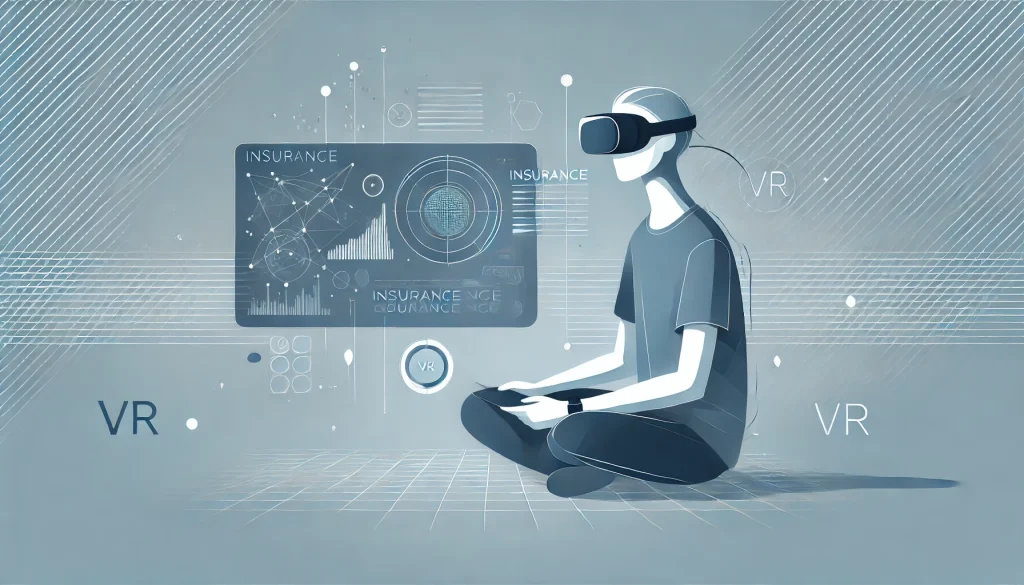
The insurance industry has been known for its confusing policies and complicated procedures. However, the ongoing changes are some of the most groundbreaking that the industry has ever experienced. The digital age with its rapid technological advancements has revolutionised how insurance products are designed, marketed, and delivered.
Central to this transformation is User Experience (UX) design, which is reshaping the insurance landscape by making it more accessible, transparent, and customer-centric. This blog explores how UX is reinventing insurance and what it means for the future of financial services.
Challenges and Limitations with Conventional Insurance
The insurance industry has always had many problems that affect customer satisfaction. Complicated policy documents, confusing jargon, lengthy application processes, and poor customer support have left many consumers frustrated.

These challenges often result in a lack of trust and engagement, with customers feeling alienated by the products meant to protect them. A report from the IBM Institute of Business Value revealed that 42% of customers do not fully trust their insurer.
Additionally, 63% don’t understand the extent of their life insurance coverage, and 50% aren’t confident they’ll receive benefits consistent with their coverage. This mistrust is aggravated by the fact that the level of trust in an insurance policy varies from person to person, influenced by factors like culture, social status, and personal experiences.
The Role of UX in Modernising Insurance

User Experience design does not just stop at creating visually appealing interfaces; it also includes crafting smooth, intuitive, and enjoyable experiences for users. In insurance, UX design plays a pivotal role in addressing the traditional pain points by simplifying the customer journey.
From the moment a potential customer interacts with an insurer—whether through a website, mobile app, or chatbot—UX design ensures that every touchpoint is optimised for ease of use and clarity.
Building Consumer Trust Through UX
To build consumer trust in digital insurance, UX teams must ensure that trust is established across the different touch points in the insurance value chain, whether focused on reliability, security, or reassurance.

1. Application Process
The language and content on landing pages must provide clear, accurate, and digestible information about what is covered and what isn’t. Consumers may feel certain questions are unnecessary or intrusive, which can foster mistrust.
Therefore, it’s valuable to explain clearly why these questions are asked, how they impact pricing, and what the company does with this private data. UX teams can analyse customer personas for each product and tailor the language and tone to their needs, ensuring that the information is accessible and understandable.
2. Claims Handling Process
Mistrust can also arise during the claims handling process if it is cumbersome and difficult to understand. A smooth, user-friendly experience, such as allowing users to speak to someone quickly through web chat, upload evidence easily, and track their claims with a clear timeline, can significantly build trust.
Key UX Innovations in the Insurance Sector

1. Simplified Onboarding Processes
One of the most significant impacts of UX design in insurance is the simplification of onboarding processes. Insurers are leveraging digital tools like e-signatures, automated data entry, and real-time identity verification to streamline the application process. What once took days or even weeks can now be completed in minutes, with minimal effort from the customer.
2. Personalised User Interfaces
Personalisation is a cornerstone of modern UX design. Insurance companies are now using AI and machine learning algorithms to create tailored experiences for their customers. By analysing user data, insurers can offer personalised policy recommendations, customised dashboards, and relevant content, all of which enhance customer satisfaction and loyalty.
3. Transparent Policy Information
No more jargon-filled policy documents. Today’s insurers are focusing on transparency by designing user-friendly interfaces that present policy information clearly and concisely. Interactive tools like policy comparison charts, explainer videos, and FAQ sections empower customers to make informed decisions without feeling overwhelmed.
4. Mobile-First Experiences

With the proliferation of smartphones, a mobile-first approach is no longer optional—it’s a necessity. 1 in 5 users spend over 4.5 hours daily on mobile devices, and mobile users are 5 times more likely to abandon tasks if the experience is not optimised. Insurers are prioritising mobile UX design, ensuring that customers can easily access and manage their policies on the go. Features like in-app claims filing, instant customer support, and push notifications for policy renewals are becoming standard offerings, providing customers with convenience at their fingertips.
5. Enhanced Claims Processing
Filing a claim has traditionally been one of the most frustrating aspects of dealing with insurance companies. UX design is transforming this experience by introducing digital claims processes that are quick, transparent, and easy to navigate. Customers can now file claims via mobile apps, track their status in real-time, and receive instant notifications on updates, significantly reducing the stress and uncertainty typically associated with claims.
The Benefits of a UX-Centric Approach
a. Increased Customer Engagement and Retention
By prioritising user experience, insurers can foster deeper connections with their customers. Engaged customers are more likely to renew their policies, recommend the insurer to others, and explore additional products and services. This translates to higher customer retention rates and long-term profitability for insurers.
b. Improved Trust and Brand Loyalty

Transparency, ease of use, and personalised experiences contribute to building trust between insurers and their customers. When customers feel that their needs are understood and met, they are more likely to develop a sense of loyalty to the brand, which is crucial in a competitive market.
c. Operational Efficiency and Cost Savings
A well-designed UX can also lead to significant operational efficiencies for insurers. Automated processes, self-service options, and digital tools reduce the need for manual intervention, lowering operational costs and freeing up resources to focus on innovation and customer service.
Insurers Leading the UX Revolution
i. Lemonade: Lemonade, a digital-first insurer, has set a new standard for user experience in the insurance sector. With its AI-driven platform, Lemonade offers instant policy issuance, rapid claims processing, and a highly intuitive user interface. The company’s focus on simplicity, transparency, and social impact has resonated with younger consumers, making it a leader in the insurtech space.
ii. Progressive: Progressive has long been at the forefront of digital innovation in insurance. The company’s mobile app is a prime example of excellent UX design, offering features like the Name Your Price tool, which allows users to customise their coverage based on their budget. Progressive’s commitment to user-centric design has helped it maintain a strong competitive edge in the market.
The Future of UX in Insurance
As technology continues to evolve, the role of UX in insurance will only become more critical. The integration of emerging technologies like blockchain, IoT, and predictive analytics will further enhance the user experience, enabling insurers to offer even more personalised, transparent, and efficient services.

Despite this, 60% of traditional insurers admit to a lack of customer experience strategy in their organisation, even though 50% of insurance customers would consider a new tech-driven entrant to the market. To catch up with the competition, traditional insurers must prioritise UX as a core component of their strategy. Partnering with f1Studioz, where our UI/UX design experts excel in reshaping digital customer experiences, gives insurers the competitive edge they need to lead in this fast-paced industry.
Conclusion
The UX revolution in insurance is a fundamental shift in how insurers interact with their customers. By focusing on user-centric design, insurance companies can overcome the challenges of the past, build stronger relationships with their customers, and drive long-term success. As the industry continues to evolve, those who prioritise UX will lead the way in shaping the future of insurance.







